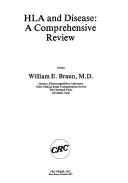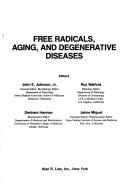| Listing 1 - 10 of 27 | << page >> |
Sort by
|
Book
ISBN: 9780802222435 0802222439 Year: 1980 Publisher: New York (N.Y.): Philosophical library,
Abstract | Keywords | Export | Availability | Bookmark
 Loading...
Loading...Choose an application
- Reference Manager
- EndNote
- RefWorks (Direct export to RefWorks)
Human beings --- Self (Philosophy) --- Alchemy --- Diseases - Causes and theories of causation --- Diseases
Digital
Year: 1804 Publisher: [England? s.n.]
Abstract | Keywords | Export | Availability | Bookmark
 Loading...
Loading...Choose an application
- Reference Manager
- EndNote
- RefWorks (Direct export to RefWorks)
Digital
Year: 1722 Publisher: London Printed for John Clark ...
Abstract | Keywords | Export | Availability | Bookmark
 Loading...
Loading...Choose an application
- Reference Manager
- EndNote
- RefWorks (Direct export to RefWorks)

ISBN: 0849357950 9780849357954 Year: 1979 Publisher: Boca Raton, Fla
Abstract | Keywords | Export | Availability | Bookmark
 Loading...
Loading...Choose an application
- Reference Manager
- EndNote
- RefWorks (Direct export to RefWorks)
Immunology. Immunopathology --- HLA histocompatibility antigens --- Diseases --- Human beings --- Causes and theories of causation --- Constitution --- Disease. --- Diseases - Causes and theories of causation --- Human beings - Constitution --- Disease --- Antigens --- Man
Book
ISBN: 3031159551 3031159543 Year: 2023 Publisher: Cham : Springer International Publishing : Imprint: Springer,
Abstract | Keywords | Export | Availability | Bookmark
 Loading...
Loading...Choose an application
- Reference Manager
- EndNote
- RefWorks (Direct export to RefWorks)
Tuberculosis have been documented since antiquity and the search of the microbes that cause this disease started more than three hundred years ago. Nevertheless, tuberculosis remains an important global health issue, with millions of people affected per year in addition to millions that remain undiagnosed and untreated. Patients with tuberculosis face the full range of recurrence, reinfection, and resistance due to diagnostic, prophylactic, and therapeutic procedures that are not as effective as they should be. In addition, variability in susceptibility to tuberculosis pose a complex problem with numerous interrelated variables. This volume is devoted to the understanding of Tuberculosis focusing on its heterogeneity, its transmission, manifestations, related conditions, diagnosis, treatments, drug resistance and prevention.
Medicine—Research. --- Biology—Research. --- Clinical medicine—Research. --- Epidemiology. --- Diseases—Causes and theories of causation. --- Biomedical Research. --- Clinical Research. --- Pathogenesis. --- Diseases --- Public health

ISBN: 0845123084 9780845123089 Year: 1986 Volume: 8 Publisher: New York (N.Y.): Liss,
Abstract | Keywords | Export | Availability | Bookmark
 Loading...
Loading...Choose an application
- Reference Manager
- EndNote
- RefWorks (Direct export to RefWorks)
Cells --- Aging --- Pathology, Molecular --- Diseases --- Free radicals (Chemistry) --- Molecular aspects --- Causes and theories of causation --- Physiological effect --- Disease. --- Cells - Aging --- Aging - Molecular aspects --- Diseases - Causes and theories of causation --- Free radicals (Chemistry) - Physiological effect --- Disease --- Aging (animal) --- Free radicals
Book
ISBN: 9780674436534 0674436539 Year: 2017 Publisher: Cambridge, Massachusetts : Harvard University Press,
Abstract | Keywords | Export | Availability | Bookmark
 Loading...
Loading...Choose an application
- Reference Manager
- EndNote
- RefWorks (Direct export to RefWorks)
"Network medicine, a new field which developed from the application of systems biology approaches to human disease, embraces the complexity of multifactorial influences on disease, which can be driven by non-linear effects and molecular and statistical interactions.The development of comprehensive and affordable Omics platforms provides the data types for network medicine, and graph theory and statistical physics provide the theoretical framework to analyze networks. While network medicine provides a fundamentally different approach to understanding disease etiology, it will also lead to key differences in how diseases are treated--with multiple molecular targets that may require manipulation in a coordinated, dynamic fashion. Much remains to be learned regarding the optimal approaches to integrate different Omics data types and to perform network analyses; this book provides an overview of the progress that has been made and the challenges that remain." [Publisher]
Medical informatics --- Data integration (Computer science) --- Diseases --- Therapeutics --- Médecine --- Intégration de données (informatique) --- Étiologie --- Thérapeutique --- Causes and theories of causation --- Data processing --- Informatique --- Informatique. --- Data processing. --- Diseases - Causes and theories of causation - Data processing --- Therapeutics - Data processing
Book
ISBN: 107162217X 1071622161 Year: 2022 Publisher: New York, NY : Springer US : Imprint: Humana,
Abstract | Keywords | Export | Availability | Bookmark
 Loading...
Loading...Choose an application
- Reference Manager
- EndNote
- RefWorks (Direct export to RefWorks)
This volume provides an updated collection of protocols for manipulating and studying VEGF signaling pathways in vitro and in vivo and aims to present a range of both firmly established and newly emerging technologies. Covering multiple model species, from mouse to zebrafish to human, the book explores the role of VEGF and VEGFR isoforms in exosomes, cultured cells, or in tissues, as well as robust cell assays for the investigation of basic angiogenic mechanisms and VEGF signaling in more complex cellular systems, amongst other subjects. Written for the highly successful Methods in Molecular Biology series, chapters include introductions to their respective topics, lists of the necessary materials and reagents, step-by-step, readily reproducible laboratory protocols, and tips on troubleshooting and avoiding known pitfalls. Authoritative and up-to-date, VEGF Signaling: Methods and Protocols, Second Edition provides a useful tool for researchers in the vascular biology community and beyond in understanding the basic biology of VEGF signaling and in translating this research into the clinic.
Cardiovascular system. --- Physiology. --- Lymphatics. --- Diseases—Causes and theories of causation. --- Cardiovascular Physiology. --- Lymphatic System. --- Pathogenesis. --- Lymphatic system --- Immune system --- Animal physiology --- Animals --- Biology --- Anatomy --- Circulatory system --- Vascular system --- Blood --- Physiology --- Circulation
Book
ISBN: 3031229975 3031229967 Year: 2023 Publisher: Cham, Switzerland : Springer,
Abstract | Keywords | Export | Availability | Bookmark
 Loading...
Loading...Choose an application
- Reference Manager
- EndNote
- RefWorks (Direct export to RefWorks)
This book addresses current topics on pathogenic Vibrio spp. from a comprehensive and holistic perspective. Here, experts in the field provide timely chapters, ranging from genomics, pathogen emergence, and epidemiology to pathogenesis, virulence regulation and host colonization. Questions addressed include: How does climate change affect the spread of these bacteria? What is the status of current vaccines? Are there novel therapeutic options to treat Vibrio infections? Is there likelihood of emergence of new pathogenic strains or species? Can insights from mathematical models and epidemiology lead to prediction of pathogen outbreaks? Recent decades have seen a steady increase in Vibrio spp. infections originating in aquatic and marine habitats, driven by higher human population densities, warming of polluted oceans, natural and human-made disasters, and mass seafood production. These conditions increase the likelihood of pathogenic Vibrio spp. coming into contact with humans, making their study even more timely and relevant as these problems escalate over time. This book is a valuable resource for health management professionals, experienced microbiologists/ microbial ecologists, and early career scientists alike who want to learn more about these important environmental human pathogens. The ideas and technologies presented in this book for preventing, controlling, and monitoring Vibrio spp. infections contribute to the UN Sustainable Development Goal 3: Good Health and Well-Being. .
Microbiology. --- Diseases—Causes and theories of causation. --- Microbial ecology. --- Bacteria. --- Epidemiology. --- Pathogenesis. --- Environmental Microbiology. --- Diseases --- Public health --- Germs --- Microbes --- Prokaryotes --- Environmental microbiology --- Microorganisms --- Ecology --- Microbiology --- Microbial biology --- Biology --- Vibrio infections. --- Gram-negative bacterial infections

ISBN: 0433163003 9780433163008 Year: 1974 Volume: 51 Publisher: London Heinemann
Abstract | Keywords | Export | Availability | Bookmark
 Loading...
Loading...Choose an application
- Reference Manager
- EndNote
- RefWorks (Direct export to RefWorks)
Mental retardation --- Diseases --- Causes and theories of causation --- Intellectual Disability --- -Mental retardation --- Idiocy --- Intellectual disabilities --- Mental deficiency --- Retardation, Mental --- Developmental disabilities --- Psychology, Pathological --- Intellect --- People with mental disabilities --- Human beings --- Illness --- Illnesses --- Morbidity --- Sickness --- Sicknesses --- Medicine --- Epidemiology --- Health --- Pathology --- Sick --- etiology. --- Mental retardation. --- Causes and theories of causation. --- Aetiology --- Etiology --- etiology --- Intellectual disability. --- Intellectual disability --- Diseases - Causes and theories of causation
| Listing 1 - 10 of 27 | << page >> |
Sort by
|

 Search
Search Feedback
Feedback About UniCat
About UniCat  Help
Help News
News